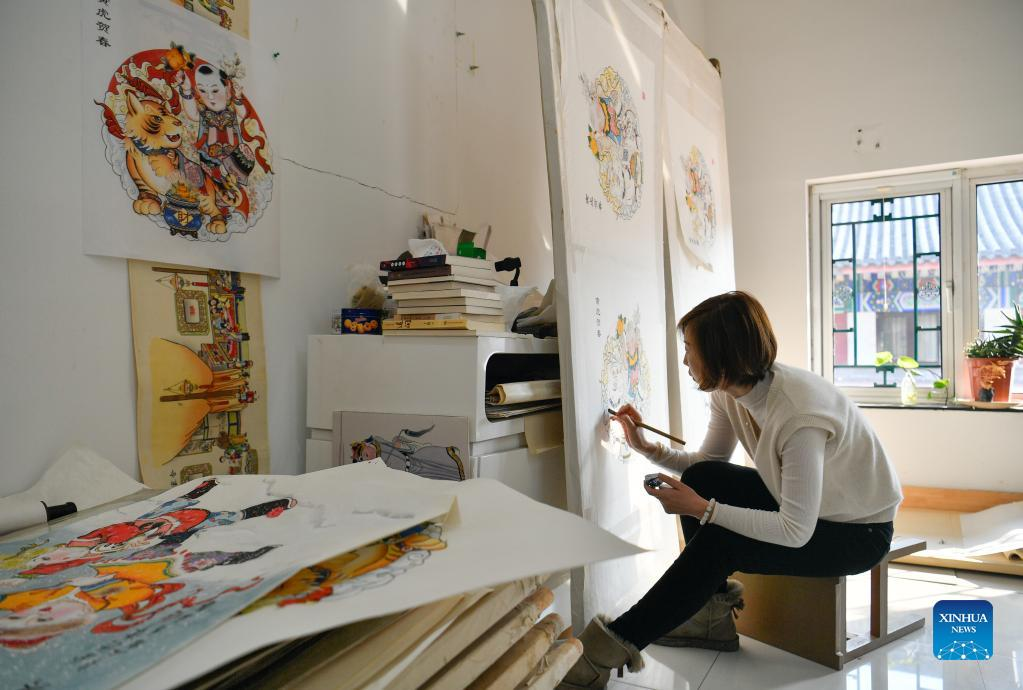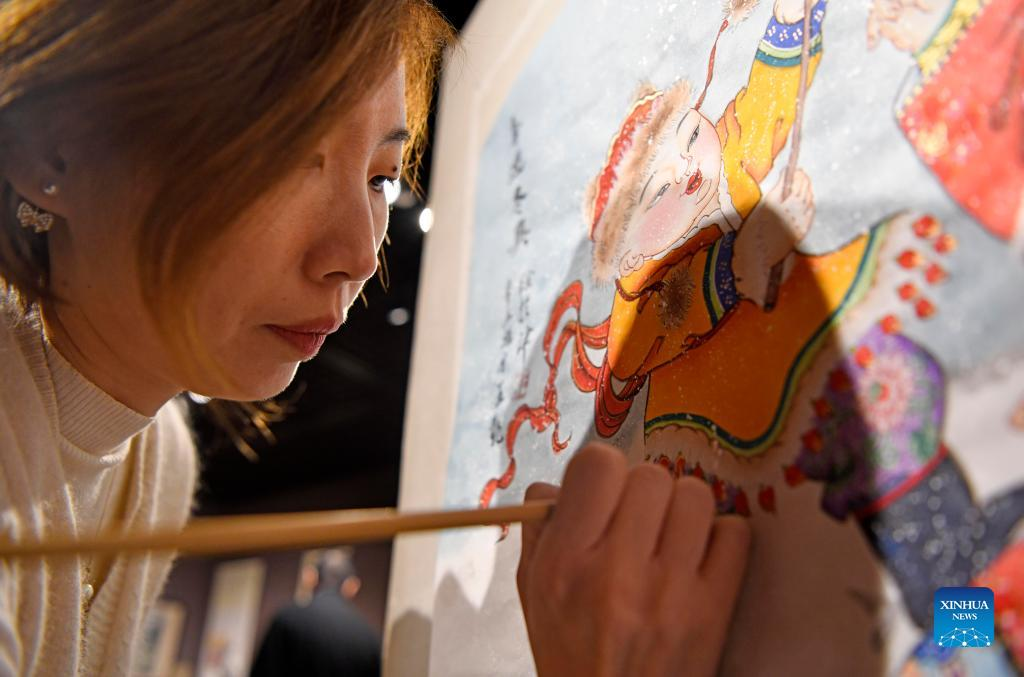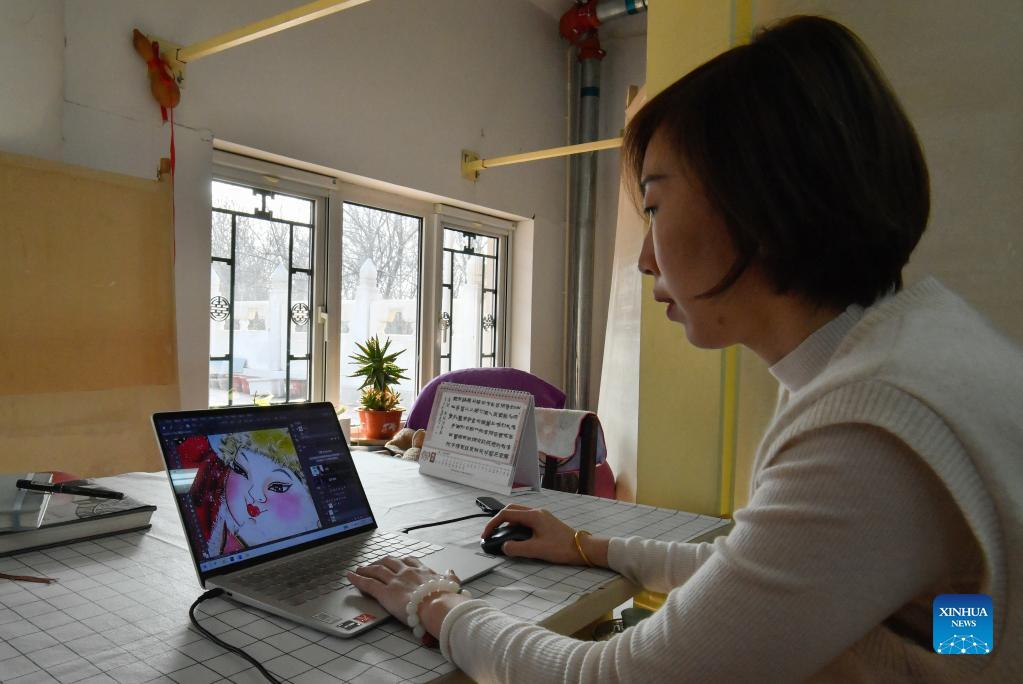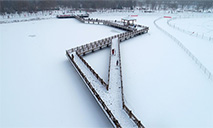Pic story of a team committed to inheriting Yangliuqing woodblock painting in Tianjin

Wang Yan, a member of a Yangliuqing woodblock painting team, works on a piece of work in Tianjin, north China, Feb. 10, 2022. A team committed to inheriting the Yangliuqing woodblock painting in Tianjin recently created New Year drawings involving various elements of Olympic Winter Games, hoping to promote the sportsmanship and Olympic spirit. The Yangliuqing woodblock painting was one of the most popular forms of New Year decorations in China, which flourished in Tianjin and the surrounding areas during a period between the late Ming Dynasty (1368-1644) and the early Qing Dynasty (1644-1911). (Xinhua/Sun Fanyue)

Children learn to paint at a workshop held by Yangliuqing woodblock painting studio in Tianjin, north China, Feb. 10, 2022. A team committed to inheriting the Yangliuqing woodblock painting in Tianjin recently created New Year drawings involving various elements of Olympic Winter Games, hoping to promote the sportsmanship and Olympic spirit. The Yangliuqing woodblock painting was one of the most popular forms of New Year decorations in China, which flourished in Tianjin and the surrounding areas during a period between the late Ming Dynasty (1368-1644) and the early Qing Dynasty (1644-1911). (Xinhua/Zhao Zishuo)

A member of a Yangliuqing woodblock painting team works on a piece of work in Tianjin, north China, Feb. 10, 2022. A team committed to inheriting the Yangliuqing woodblock painting in Tianjin recently created New Year drawings involving various elements of Olympic Winter Games, hoping to promote the sportsmanship and Olympic spirit. The Yangliuqing woodblock painting was one of the most popular forms of New Year decorations in China, which flourished in Tianjin and the surrounding areas during a period between the late Ming Dynasty (1368-1644) and the early Qing Dynasty (1644-1911). (Xinhua/Sun Fanyue)

A member of the Yangliuqing woodblock painting team works on a piece of work involving elements of Olympic Winter Games in Tianjin, north China, Feb. 10, 2022. A team committed to inheriting the Yangliuqing woodblock painting in Tianjin recently created New Year drawings involving various elements of Olympic Winter Games, hoping to promote the sportsmanship and Olympic spirit. The Yangliuqing woodblock painting was one of the most popular forms of New Year decorations in China, which flourished in Tianjin and the surrounding areas during a period between the late Ming Dynasty (1368-1644) and the early Qing Dynasty (1644-1911). (Xinhua/Zhao Zishuo)

Wang Yan, a member of the Yangliuqing woodblock painting team, works a piece of work on a laptop in Tianjin, north China, Feb. 10, 2022. A team committed to inheriting the Yangliuqing woodblock painting in Tianjin recently created New Year drawings involving various elements of Olympic Winter Games, hoping to promote the sportsmanship and Olympic spirit. The Yangliuqing woodblock painting was one of the most popular forms of New Year decorations in China, which flourished in Tianjin and the surrounding areas during a period between the late Ming Dynasty (1368-1644) and the early Qing Dynasty (1644-1911). (Xinhua/Sun Fanyue)

A member of the Yangliuqing woodblock painting team works on a piece of work involving elements of Olympic Winter Games on a laptop in Tianjin, north China, Feb. 10, 2022. A team committed to inheriting the Yangliuqing woodblock painting in Tianjin recently created New Year drawings involving various elements of Olympic Winter Games, hoping to promote the sportsmanship and Olympic spirit. The Yangliuqing woodblock painting was one of the most popular forms of New Year decorations in China, which flourished in Tianjin and the surrounding areas during a period between the late Ming Dynasty (1368-1644) and the early Qing Dynasty (1644-1911). (Xinhua/Zhao Zishuo)

A member of a Yangliuqing woodblock painting team works on a piece of work involving elements of Olympic Winter Games in Tianjin, north China, Feb. 10, 2022. A team committed to inheriting the Yangliuqing woodblock painting in Tianjin recently created New Year drawings involving various elements of Olympic Winter Games, hoping to promote the sportsmanship and Olympic spirit. The Yangliuqing woodblock painting was one of the most popular forms of New Year decorations in China, which flourished in Tianjin and the surrounding areas during a period between the late Ming Dynasty (1368-1644) and the early Qing Dynasty (1644-1911). (Xinhua/Zhao Zishuo)
Photos
Related Stories
- China's Tianjin sees booming port throughput for B&R countries
- Tianjin introduces takeout service for holiday feasts in low-risk areas for COVID-19
- Tianjin launches fourth citywide nucleic acid testing
- China's Tianjin posts 6.6 pct GDP growth in 2021
- 3rd round of citywide nucleic acid test launched in Tianjin
Copyright © 2022 People's Daily Online. All Rights Reserved.










